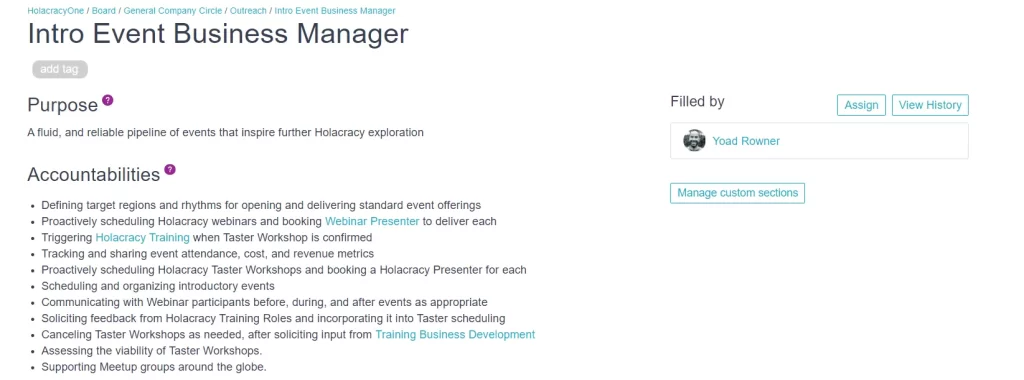
Pop Quiz: What do you do when your colleague doesn’t do what they “should” be doing?
- A) Let them know that you’re disappointed in their actions.
- B) Escalate the problem to your boss to find a solution.
- C) Quietly find a way to work around their weaknesses.
If you’re like most of us, you have selected A, B, and/or C at some point in your professional life. And you have most likely experienced the impacts of these decisions in the form of frustration and resentment — yours or theirs.
You get misinterpretations, you get things that go longer than they should go. People forget what they talked about, and there are just ships passing in the night out there. And that’s tough, especially when you’ve got people who love to be in the loving, collaborative environment. You’ll find that a lack of clarity in terms of the work undermines that like crazy.
David Allen, author of Getting Things Done and founder of The David Allen Company
You don’t want to let the infraction slide, but you don’t want to alienate your colleague either. So what’s the way out of this double-bind?
Invisible assumptions
Thankfully, there is an Option D, but many of us (myself included) often fail to notice it because Options A through C are built on a number of invisible assumptions.
We often assume that our colleague:
- Knows that he or she is responsible for that given task.
- Agrees that he or she “should be” responsible for that given task.
We don’t question these assumptions because the answer appears so obvious, or because we’re afraid of a conflict over the basic premises. After all, if they shouldn’t be responsible for it, who should be? Hopefully not you. You’ve already got way too much on your plate. And you definitely don’t want to get into an argument that you can’t resolve.
The above situation is tragically common in work life, because the tools for clarifying conflicts in understanding often fall short. Who wants to complain to the boss? Or nag your colleague? Or take on more work that doesn’t feel like yours? Nobody, that’s who.
In a workplace where authority is distributed, without a boss to serve as a mediator, the situation can become even murkier and more fraught with peril. In peer-to-peer work environments, it becomes not just important, but absolutely critical, to have a neutral process for clarifying responsibility.
Holacracy offers new tools to create radical transparency about who is doing what and transform conflicts into opportunities to clarify responsibilities.
So how do these tools work?
Transparent responsibilities
Each individual in a Holacracy-powered organization will fill a role with some responsibilities assigned to it.
Here is an example of a role with responsibilities related to setting up public events to help build an interest in Holacracy.

We use GlassFrog, a software that we designed for Holacracy practice, to make these responsibilities visible and searchable for everyone working in our organization. Just having these roles written down and transparent helps increase clarity about who is responsible for what.
You know, you have an organization with 50 people, we have 300+ roles now, and still people can just find the right person for something on their first day. That’s magic.
Ruben Timmerman, founder of Springest
But what happens when something entirely new comes into the organization that doesn’t fall under anyone’s current responsibilities? Or when there are conflicting interpretations of what’s written down?
The governance meeting process
Holacracy offers a unique process, called a Governance Meeting, for clarifying responsibilities in an ongoing way.
In Governance Meetings, anyone working within a given team can bring in an issue — something that they want to clarify or update — and offer a proposal for how to change it. This could be work that isn’t currently captured anywhere in the organization or a clarification of existing work. The important thing is that, with Holacracy practice, there’s a special designated meeting for working on the organization (instead of just in it) and in this space the team, not the boss, will sort out the best way to break down responsibility among its members.
A Governance Meeting is essentially a way for the team to organize around the work. In a hierarchy, typically that work is done by a manager, but in Holacracy, where there are ‘no managers’, that work still needs to be done, but now it’s done by the team itself. . . .And [Holacracy] uses a very structured process in order to work through those issues that come up.
Michael DeAngelo, Deputy Chief Information Officer at WaTech
In Governance Meetings, conflicting understandings of the work are productive because they generate an opportunity to build mutual clarity about who is doing what.
The rules about Governance Meetings say that anyone can bring in a proposal to change something they feel could be improved. After the proposal is made, others in the team will have a chance to ask questions, offer opinions, and even raise objections to the proposal.

The Holacracy Governance Meeting process offers a specific process for determining which objections are relevant, and then for integrating these objections to the satisfaction of both the proposer and the objector.
Proposals that are accepted then get captured in GlassFrog so that everyone can view the changes.
Going back to the example of the role above, you can see it has an accountability for “Supporting Meetup groups around the globe.” This wasn’t always clearly defined as a responsibility of this role. Previously, this role focused exclusively on scheduling and supporting our own events.
But one of our marketing team members realized that there were meet-ups happening around the world scheduled by others outside of our organization, and that we could benefit as an organization if someone on our team would support these meet-ups. So, without blaming the role-filler for not doing this work previously, the marketing team member brought a proposal to the Governance Meeting to add an accountability to this role for “Supporting Meetup groups around the globe.”
Since new challenges and opportunities are constantly presenting themselves, clarity is a moving target. That’s why every team in a Holacracy-powered organization meets regularly (usually once per month or more) to keep updating responsibilities about the work so they align with the reality of organizational needs.
The Governance Meeting is a process for clarifying responsibility, and GlassFrog is a software tool for creating transparency, but equally important is the shift in mindset that occurs with the Holacracy practice.
Moving from blame to responsibility
In typical work life, we use the word “should” all the time to imply that someone is not doing what they are “supposed to” do.
“Should” means that you had an expectation that the other person didn’t meet. It also implies that they bear both responsibility and blame for this failure to live up to expectations.
Hearing “should” doesn’t feel good because it’s loaded with assumptions about intent — like the one that you knew that you were responsible for this work and willfully chose to do something else. Receiving a “should” from a colleague or boss is likely to result in either shame or resentment — neither of which is a recipe for productivity or goodwill.
With Holacracy practice in place, expectations go from being implicit to explicit:
In other words, if it’s not written down somewhere in a mutually agreed upon place, then you don’t actually have a right to expect it.
If you want to have the right to expect it, then the responsibility falls to you to bring the issue to a Governance Meeting. This level of responsibility may not always be welcome, but it is empowering. At the end of the day, you have all the tools you need to effectively process a misunderstanding into increasing clarity.
This shift out of blame mode also has great potential for healing the interpersonal impacts of blame. When you bring an issue to a Governance Meeting, you’re saying, “Hey, team, I’m seeing an issue. Here’s my proposal for how we can fix it.” Feel how different that is from saying, “Seriously, you really should have updated the website by now”?
At the same time, the organization benefits from the clarity that results from resolving conflicting understandings of the work. When responsibility is clear, requests between peers become easier.
A final caveat
A question that we often hear is, “Well what if he or she doesn’t perform the accountabilities that have been clarified and agreed upon in a Governance Meeting?” I agree, that is a conundrum.
However, this is a conundrum that exists in hierarchical organizations as well. If you have a colleague (let’s call him Joe) who is not doing what he or she has agreed to do, then it might be time to have a serious conversation.
Perhaps Joe is feeling overwhelmed with his workload, in which case, he might need some support in his roles. On the other hand, it’s also possible that Joe just isn’t a good fit for his roles or even the organization — that he’s not able to perform his accountabilities in the way that the organization needs him to. And in that case, someone (the role-filler with an accountability for evaluating team members’ fit for role) may need to have a difficult conversation with Joe.
Holacracy practice isn’t a panacea; it won’t solve problems of organizational overwhelm or individual capacity.
That said, GlassFrog and the Governance Meeting Process offer powerful tools for transforming conflicts in understanding into the fuel for ongoing organizational clarity.
To learn more about self-management, join a community of pioneers and check out our e-courses → Self-Management Accelerator



